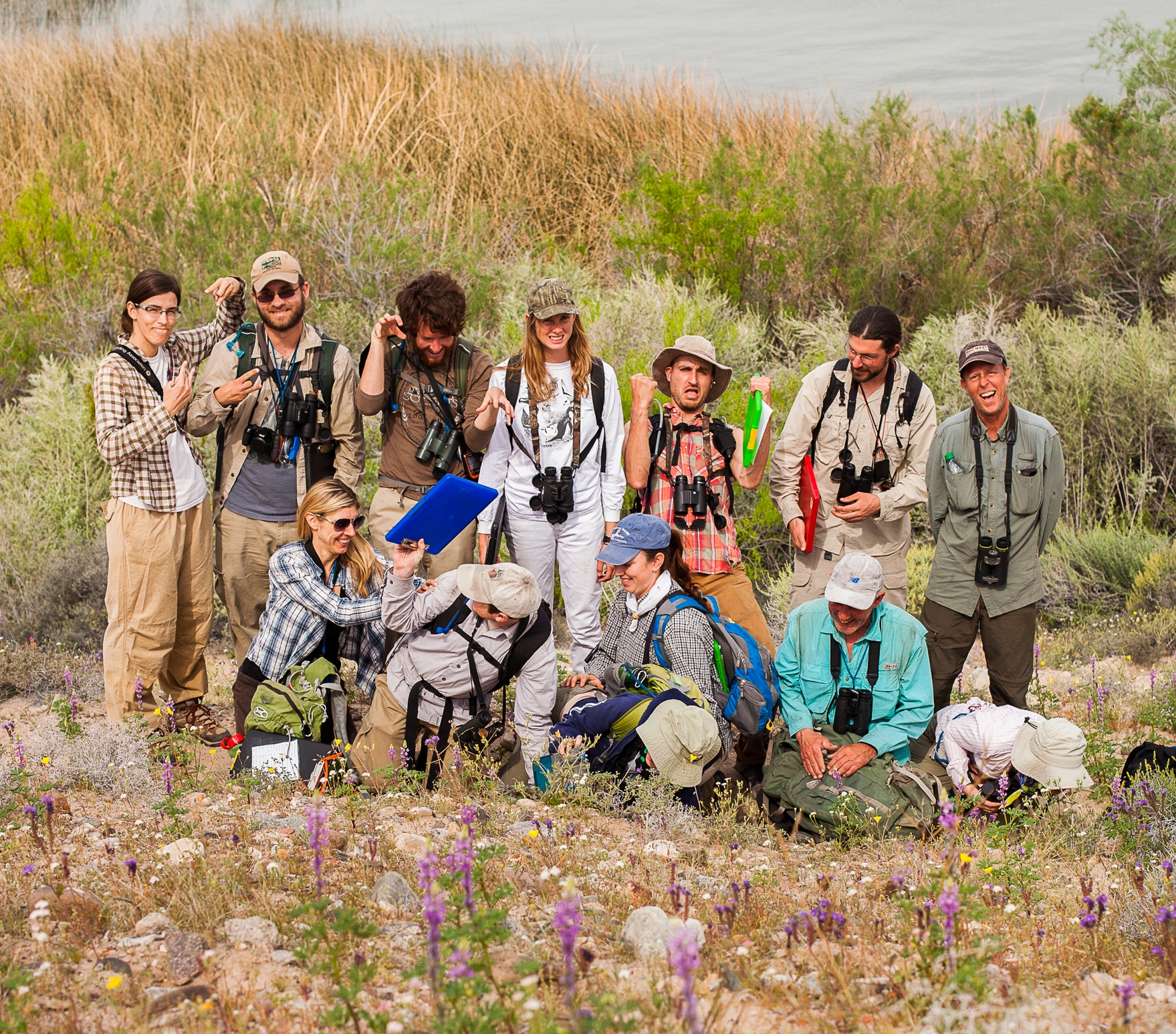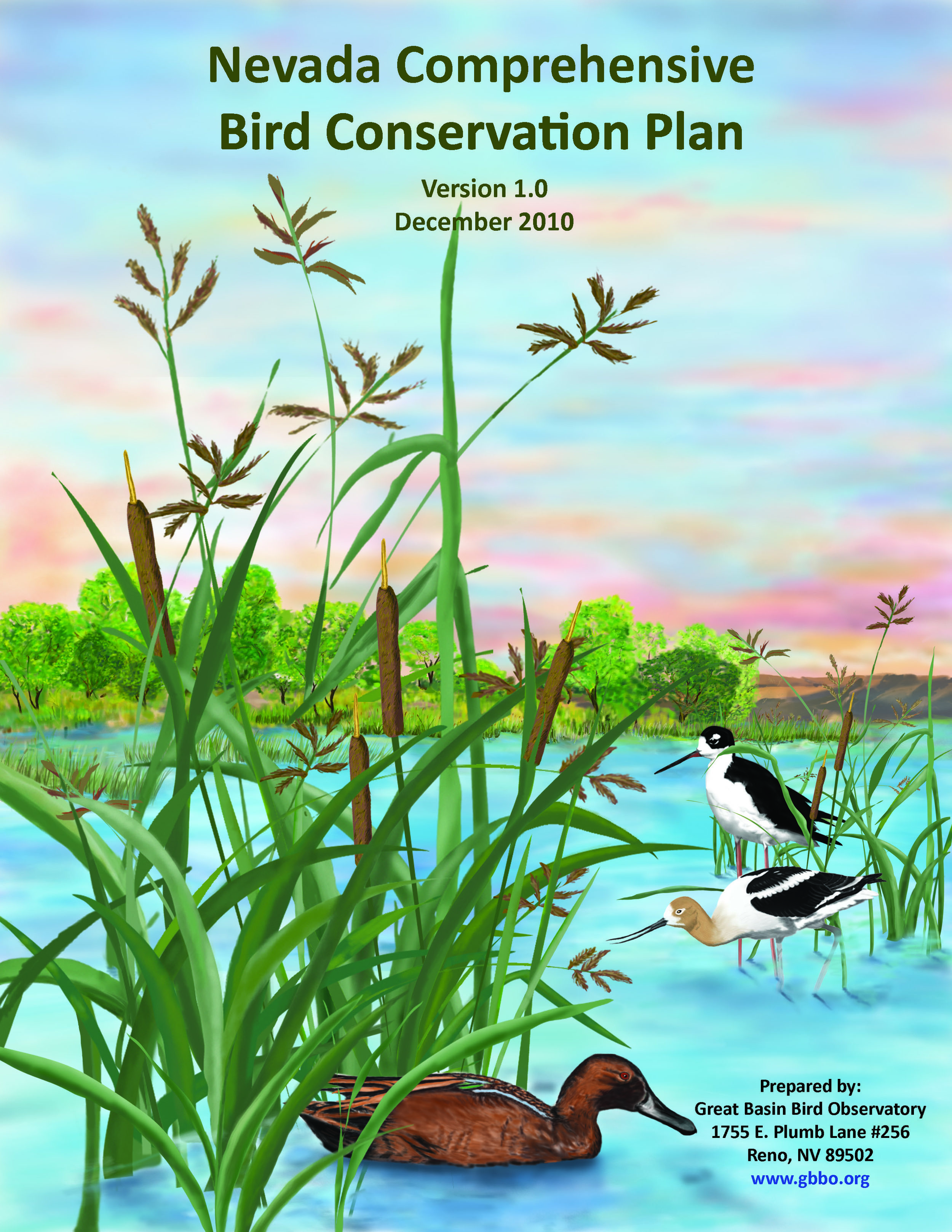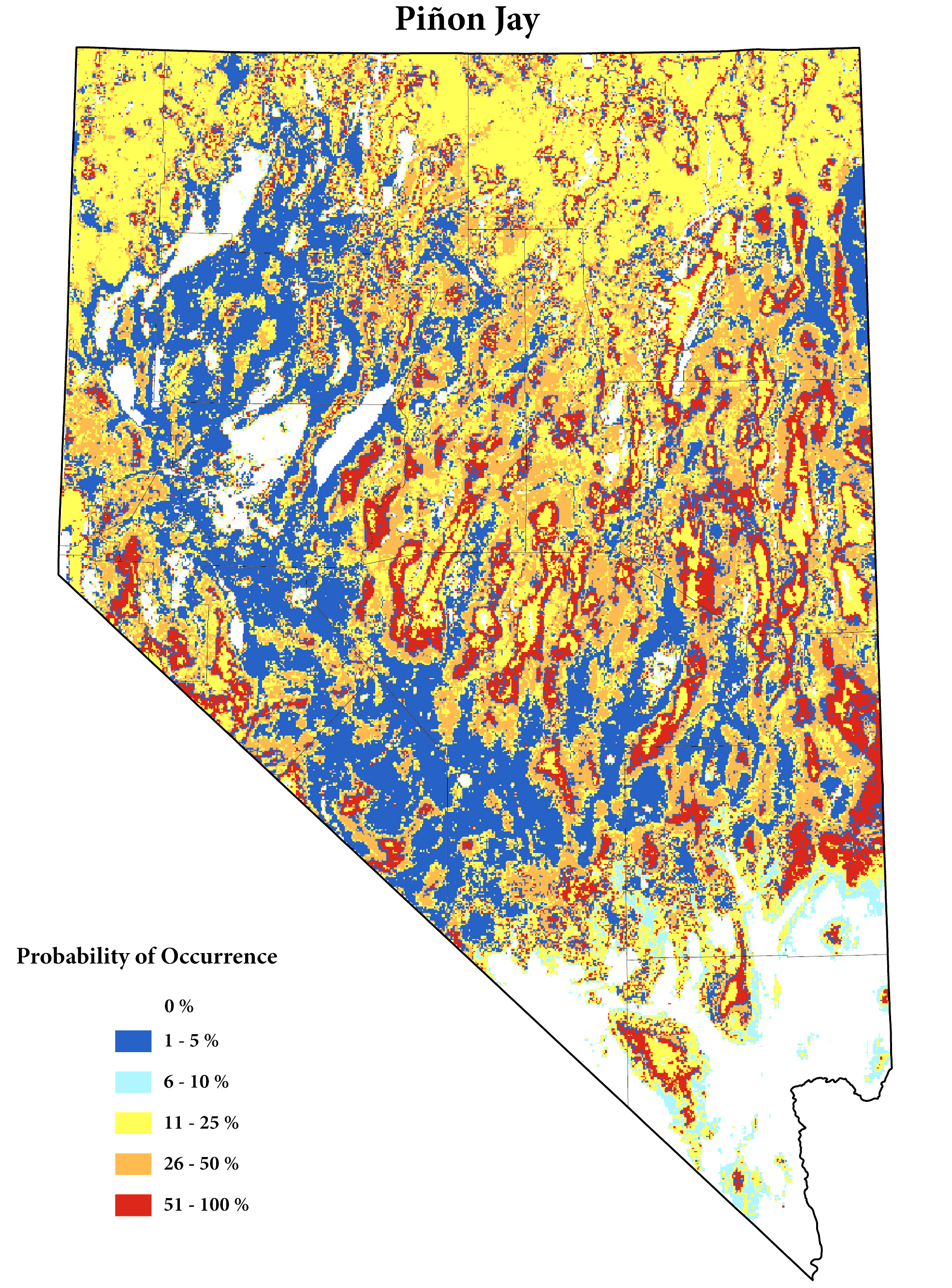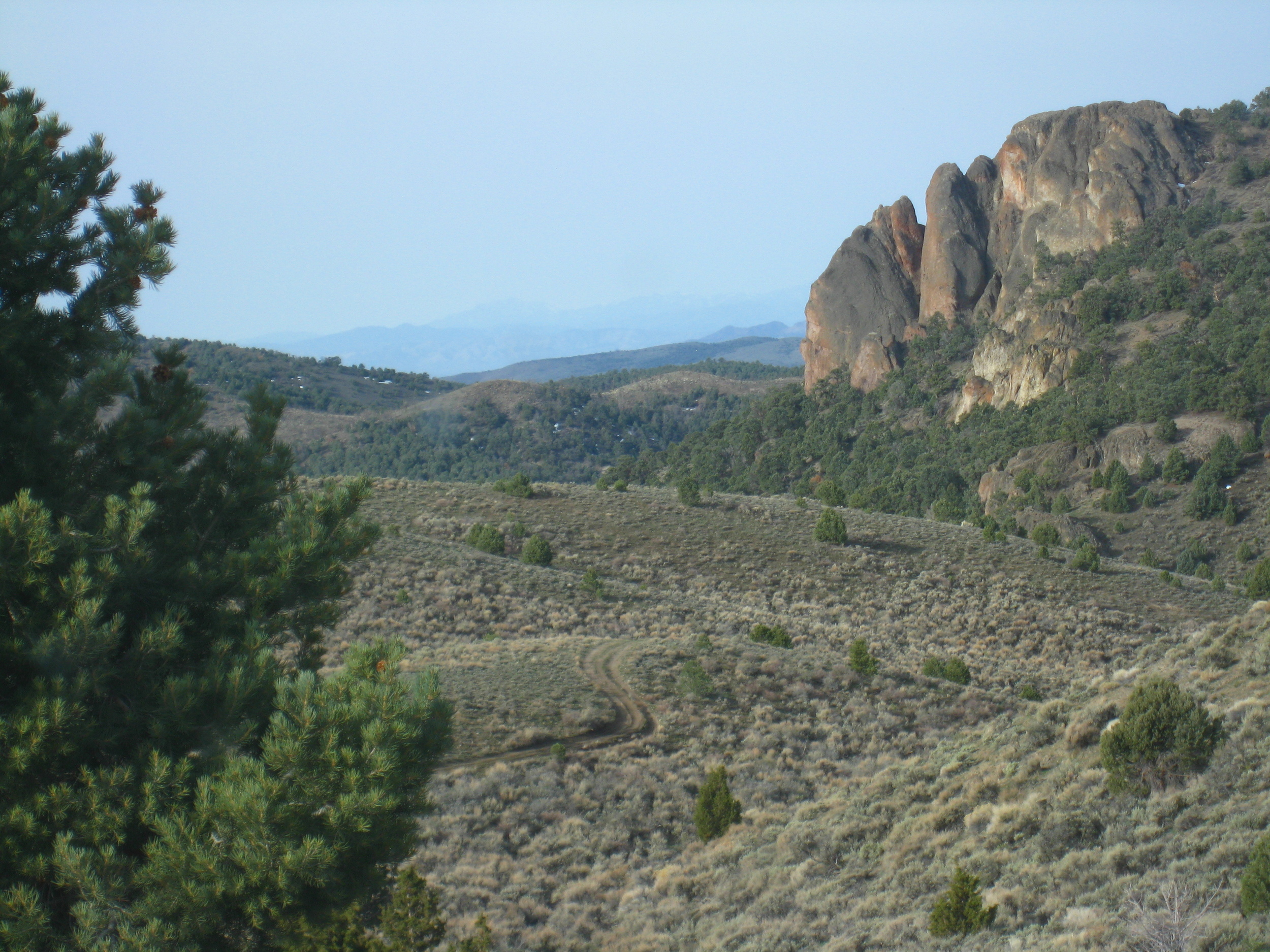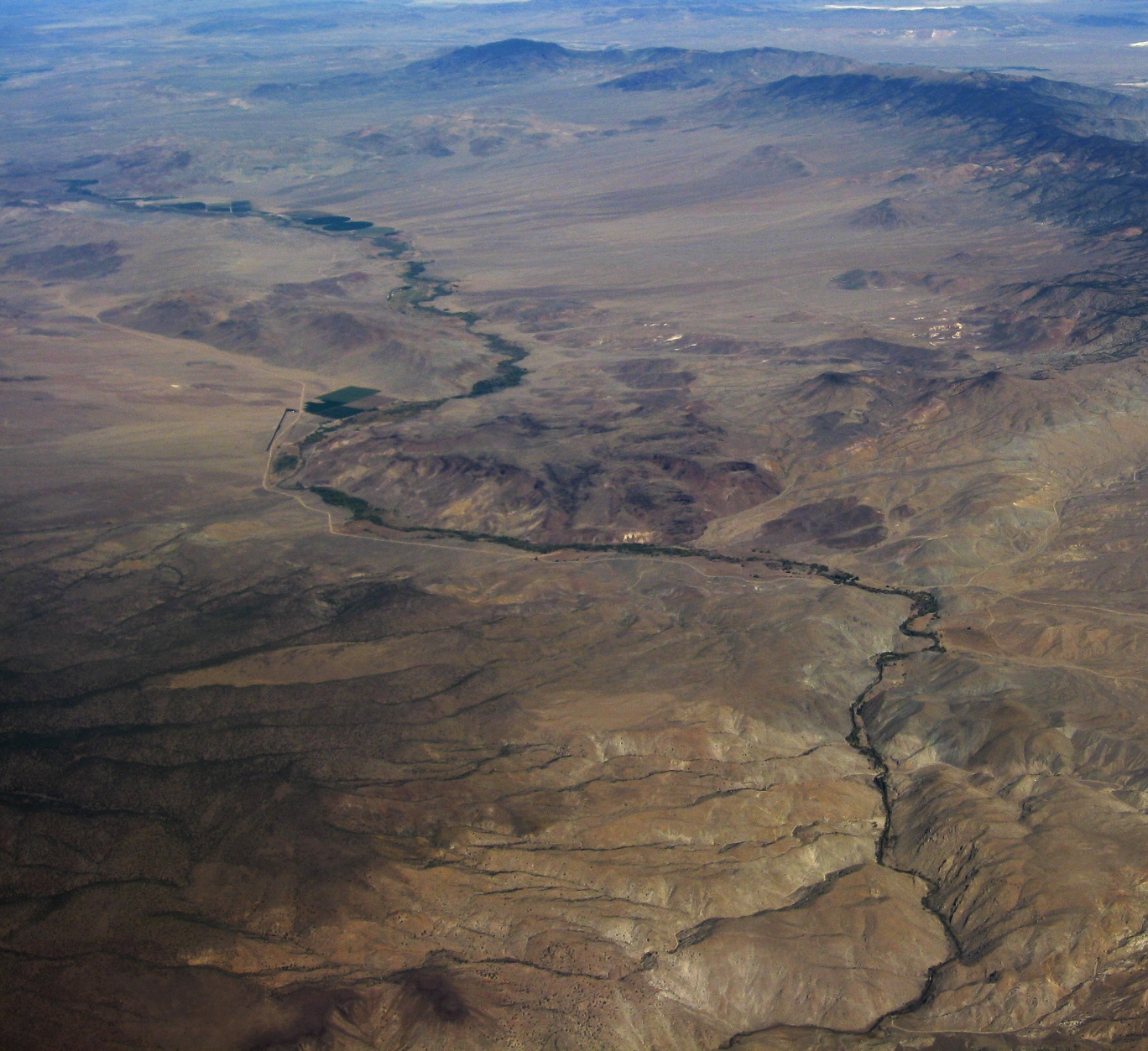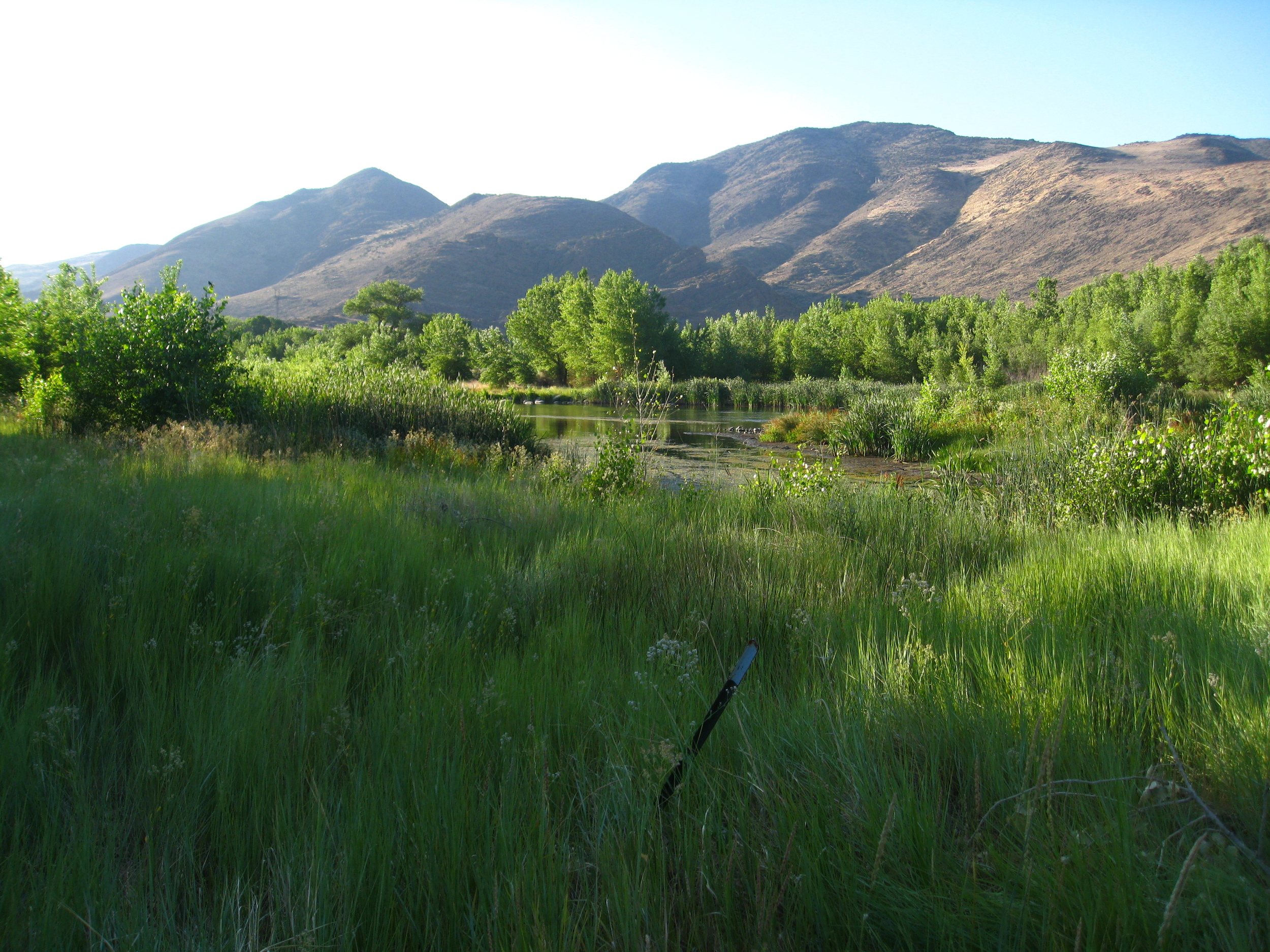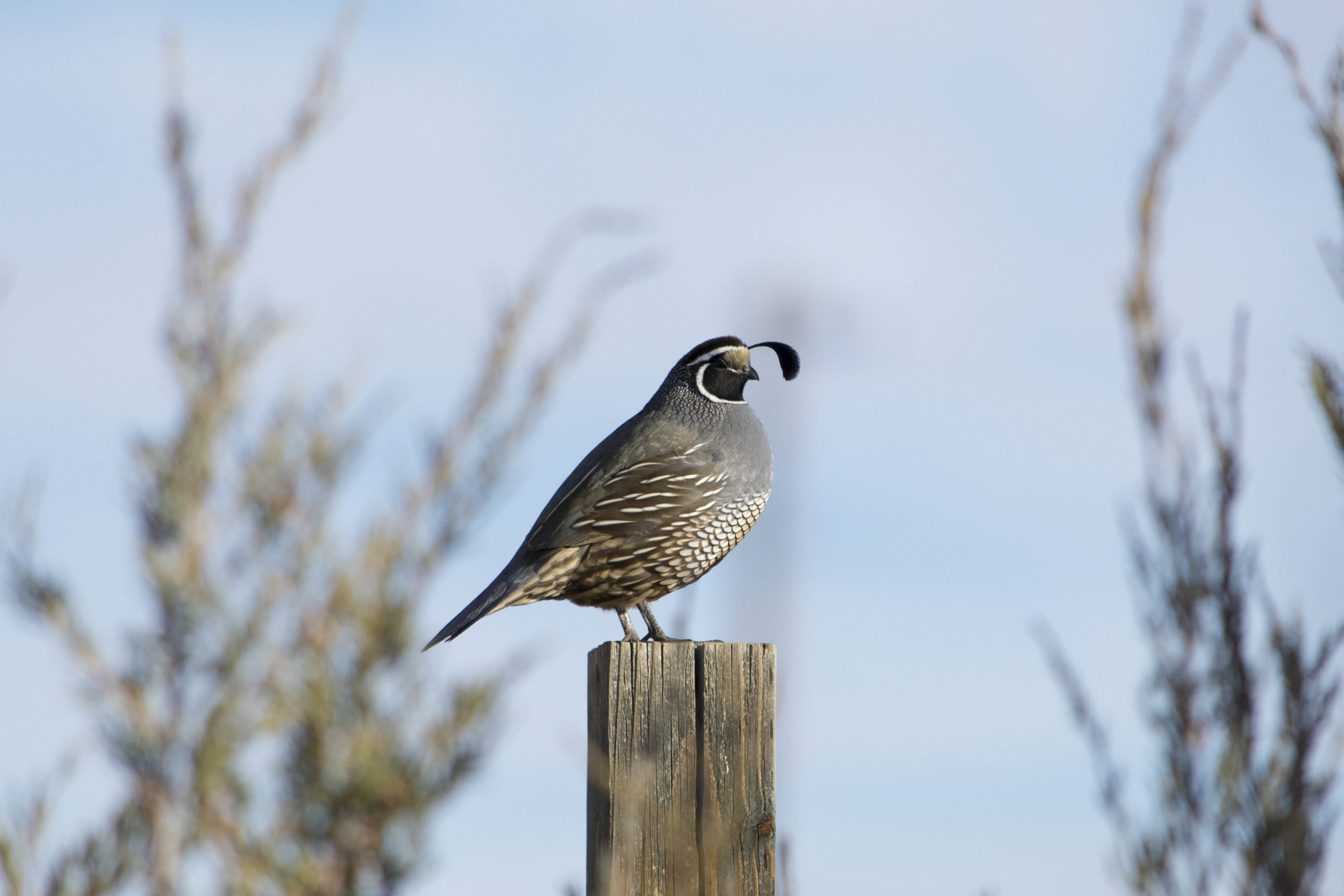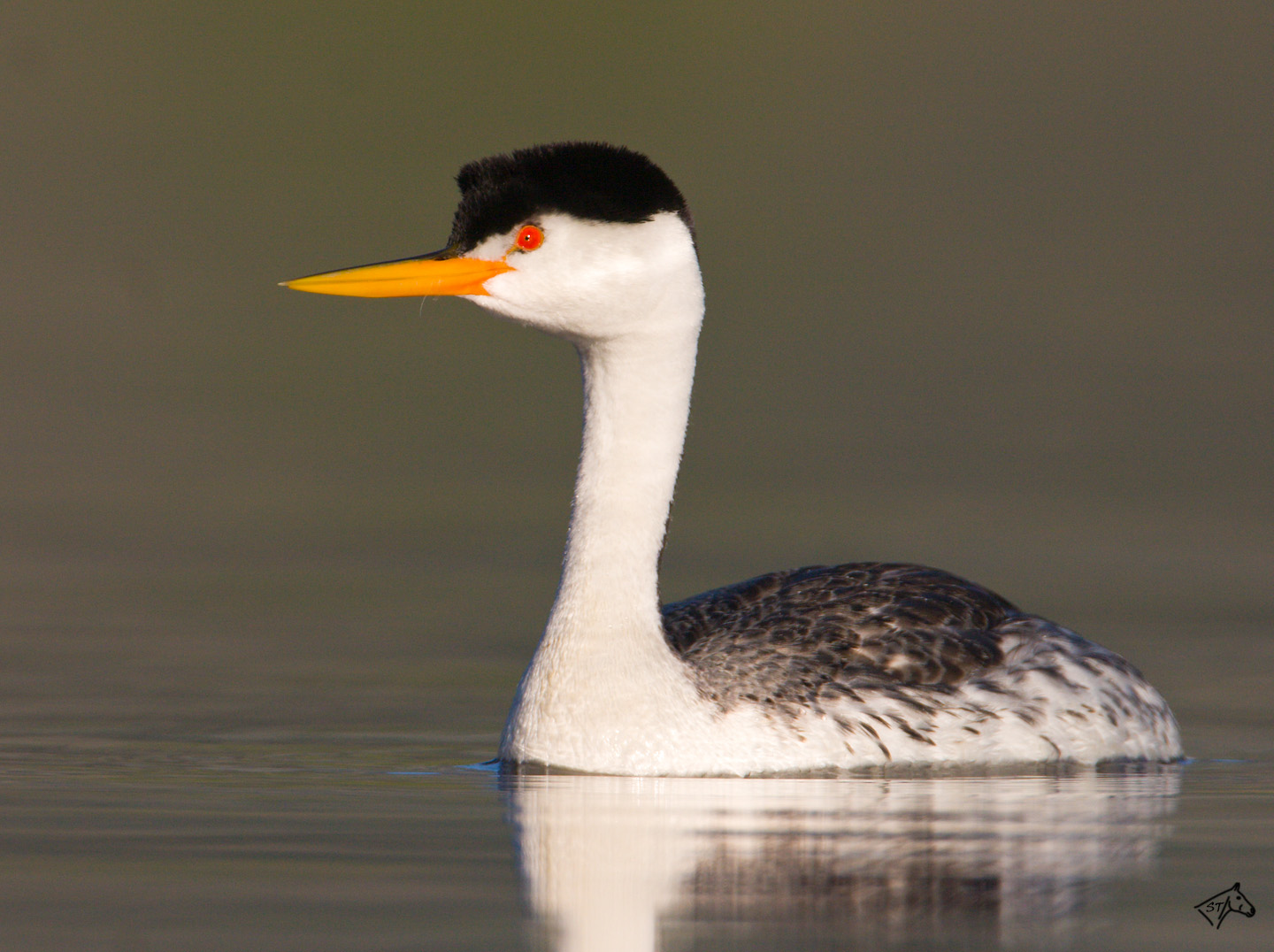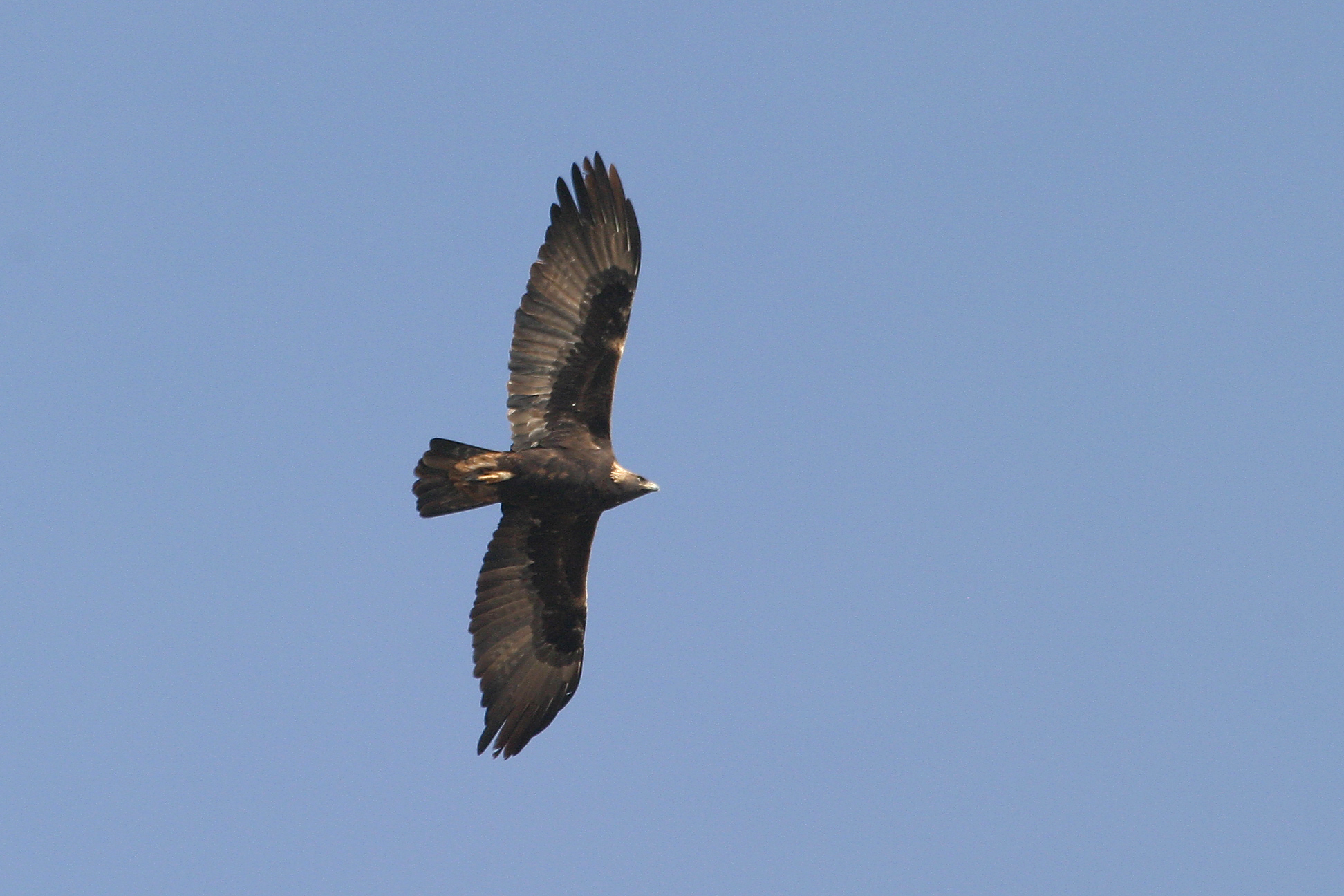Did You Know?
Today, Eurasian Collared-Doves are extremely common in Nevada. During the breeding bird atlas years (1997-2000), the species could not be confirmed as a breeder in the state.
The Nevada Breeding Bird Atlas project was the first comprehensive, statewide inventory of Nevada’s breeding birds. The project began in 1997 and field work was completed in 2000. The project involved surveys of 769 atlas blocks and nearly 10,000 incidental records. It was the first and largest citizen-scientist effort in the state at that time, with over 400 atlas surveyors spending more than 14,000 hours and traveling over 150,000 miles to survey sites throughout Nevada.
The 769 original atlas blocks were selected in a random fashion throughout 16 major habitat types represented in Nevada. In addition, 78 new atlas blocks were visited in an effort to generate a predictive model that allowed us to estimate the probability of each species’ occurrence throughout the state, including areas that were not sampled during the atlas surveys.
A total of 243 species were confirmed as, or strongly suspected to be, breeders in Nevada during the atlas project. New species confirmed as nesting in Nevada included the Gilded Flicker and the Rufous-crowned Sparrow. For some species, for example Black-billed Magpie, Gray Vireo, and Wilson’s Warbler, the breeding distributions were significantly different than previously assumed. Several species eluded confirmation for breeding, such as Sharp-tailed Grouse, Spotted Owl, Pileated Woodpecker, and Hermit Warbler, all of which are suspected to be at least occasional breeders in the state, and some of which have been confirmed since the atlas field work was concluded. Overall, the atlas paints a picture of a very dynamic bird community, with some species apparently declining or contracting their breeding range in the state but others, such as Eurasian Collard-Dove, White-winged Dove, Anna’s Hummingbird, and Great-tailed Grackle, actively expanding their range and apparently increasing in numbers. These findings suggest that continued monitoring and a continuation of the atlas effort are critical for understanding the changes occurring in the Nevada landscapes and the bird communities that inhabit them (see also below: Future of the Nevada Atlas Project).
More than 25 partners representing public agencies, private groups, and corporations provided critical financial and in-kind support for the atlas project. Since 2000, GBBO has worked with the original atlas leaders Ted Floyd, Graham Chisholm, Chris Elphick, Kevin Mack, and Bob Elston to vet over 30,000 records in the atlas data base and prepare a final manuscript for publication by the University of Nevada Press.
The book Atlas of the Breeding Birds of Nevada presents maps with all breeding records and maps with the predicted distributions of all 243 species that were confirmed as breeders in Nevada during the atlas project. The book, which features cover art by David A. Sibley and book illustrations by Ray Nelson, will be published in April 2007 by the University of Nevada Press. For more details on the book, please see http://www.nvbooks.nevada.edu/books.asp?ID=2453.
Future of the Nevada Breeding Bird Atlas Project
GBBO intends to keep the atlas data base open for continual amendment with new data. After final clean-up work, we will post the data base, the locations of atlas blocks, and information on how to submit additional atlas records on our website.
We encourage all atlas supporters to continue to collect atlas data in their favorite atlas block and report casual breeding records, especially for species for which additional records would change our view of their distribution.
For example, one of the items we discovered is that during the atlas project, many of the very early breeders (especially in the Mojave Desert) and very late breeders may have been inadequately covered during the 1997-2000 atlas field seasons. Therefore, any confirmed breeding records outside the May-June period are of particular interest to amending the data base.
This volunteer effort to amend the atlas data base will also allow us to judge when it will be time to do another comprehensive atlas project that involves revisiting all atlas blocks to determine changes in breeding distributions of Nevada’s birds. Help celebrate Nevada’s bird diversity with your participation!
Here are the species for which we would particularly like additional data (i.e., confirmed, probable, and possible breeding evidence, especially records from beyond the currently recognized range):
Species not confirmed as breeders in Nevada during the Atlas Project:
| Bufflehead Hooded Merganser Sharp-tailed Grouse White-tailed Kite Common Black-Hawk Zone-tailed Hawk Black Rail Clapper Rail Heerman’s Gull Eurasian Collard-Dove Elf Owl Barred Owl Black Swift |
Vaux’s Swift Rufous Hummingbird Acorn Woodpecker Gila Woodpecker Pileated Woodpecker Pacific-slope Flycatcher Gray Catbird Hermit Warbler Painted Redstart Hepatic Tanager Grasshopper Sparrow Common Grackle Gray-crowned Rosy-Finch |
Species for which we would like to know about additional breeding sites in Nevada:
Waterfowl: Trumpeter Swan Upland Gamebirds: Gray Partridge Waterbirds and Waders: Western Grebe Diurnal Birds of Prey: Osprey Rails and Cranes: Sora Shorebirds, Gulls, and Terns: Snowy Plover Doves and Pigeons: White-winged Dove Cuckoos and Roadrunners: Yellow-billed Cuckoo Owls and Goatsuckers: Barred Owl Swifts and Hummingbirds: White-throated Swift Kingfishers, Woodpeckers, and Sapsuckers: Belted Kingfisher Flycatchers, Kingbirds, and Phoebes: Olive-sided Flycatcher |
Vireos: Bell’s Vireo Corvids: Steller’s Jay Swallows: Tree Swallow Chickadees: Black-capped Chickadee Nuthatches and Creepers: (especially in central Nevada) Red-breasted Nuthatch Wrens and Dippers: Cactus Wren Kinglets: Golden-crowned Kinglet Bluebirds, Mockingbirds, Thrushes, and Thrashers: Western Bluebird Pipits and Waxwings: American Pipit Warblers: Orange-crowned Warbler Tanagers: Summer Tanager Sparrows: Rufous-crowned Sparrow Grosbeaks, Buntings, and Bobolinks: Black-headed Grosbeak (lowland riparian areas?) Blackbirds and Grackles: Tricolored Blackbird (anywhere in western Nevada) Orioles: Hooded Oriole (Great Basin) Finches, Crossbills, Goldfinches, and Grosbeaks: Black Rosy-Finch |




